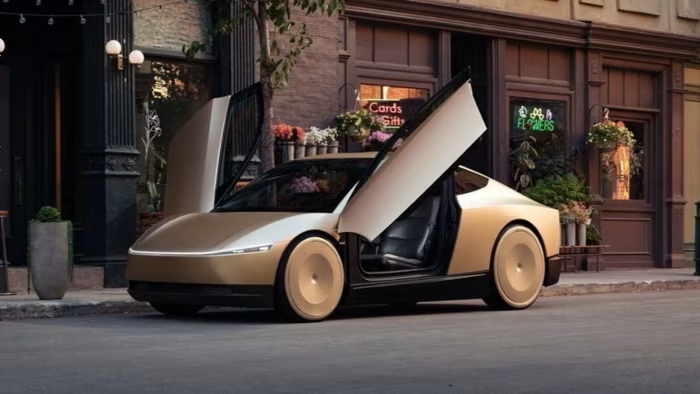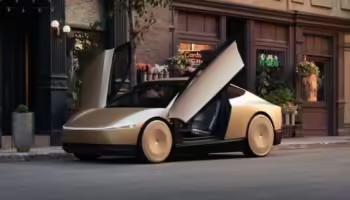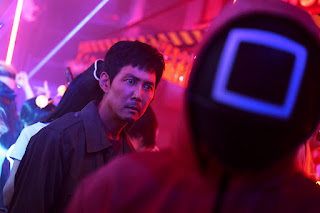Introduction
Tesla’s Cybercab robotaxi is here — and it could cost less than $30K. This groundbreaking announcement from Tesla’s CEO, Elon Musk, marks a significant milestone in the electric vehicle (EV) market. The Cybercab is poised to revolutionize urban transportation with its advanced autonomous technology and affordable pricing. In this blog post, we will delve into the details of the Cybercab, explore its unique features, and examine its potential impact on the automotive industry and urban mobility.
Overview of Tesla’s Cybercab
The Cybercab is designed to resemble Tesla’s futuristic Cybertruck, featuring a bold and innovative design that sets it apart from traditional vehicles. This two-seater robotaxi boasts state-of-the-art autonomous driving capabilities, making it a pioneer in the realm of driverless transportation.
Design and Features
The Cybercab’s design is a testament to Tesla’s commitment to pushing the boundaries of automotive innovation. With its angular lines and metallic finish, the Cybercab is not only visually striking but also highly functional. The two-seater configuration ensures a compact and efficient design, making it ideal for urban environments where space is at a premium.
Key features of the Cybercab include advanced sensors and AI algorithms that enable seamless navigation and autonomous driving. The vehicle is equipped with a robust array of cameras, radar, and ultrasonic sensors that provide a 360-degree view of its surroundings, ensuring safe and efficient operation.
Specifications and Performance
While detailed specifications are still emerging, the Cybercab is expected to deliver impressive performance metrics. The vehicle is designed to be both energy-efficient and powerful, leveraging Tesla’s expertise in electric drivetrains. It is anticipated that the Cybercab will offer a substantial range on a single charge, making it suitable for extended use in urban settings.
A Game Changer in Pricing Strategy
One of the most notable aspects of the Cybercab is its affordability. Tesla has announced a bold pricing strategy, setting the cost of the Cybercab at less than $30K. This move is aimed at making autonomous vehicles accessible to a broader audience, potentially transforming the market dynamics of robotaxi services and electric vehicles.
Affordability and Market Competition
The competitive pricing of the Cybercab positions it as an attractive option for consumers and businesses alike. In comparison to other robotaxi services and electric vehicles, the Cybercab’s affordability is a game changer. It opens up the possibility of widespread adoption, particularly in urban areas where the demand for efficient and cost-effective transportation solutions is high.
Accelerating Consumer Adoption
Tesla’s aggressive pricing approach is likely to accelerate consumer adoption of autonomous vehicles. By making the Cybercab affordable, Tesla is not only democratizing access to cutting-edge technology but also paving the way for a future where autonomous transportation is the norm. This strategy could significantly boost Tesla’s market share and establish the Cybercab as a dominant player in the robotaxi sector.
Unveiling the Technology Behind the Wheel
The Cybercab is powered by some of the most advanced autonomous technology available today. Tesla has integrated AI algorithms and sophisticated navigation systems to ensure the vehicle can operate safely and efficiently without human intervention.
Autonomous Technology and AI Integration
At the heart of the Cybercab’s capabilities is its AI-driven autonomous system. Tesla has developed proprietary algorithms that enable the vehicle to make real-time decisions based on its surroundings. This includes everything from detecting obstacles and navigating complex traffic scenarios to optimizing routes for efficiency.
Advanced Sensors and Navigation Systems
The Cybercab is equipped with an array of sensors that provide comprehensive coverage of its environment. These sensors work in tandem with Tesla’s AI algorithms to deliver precise and reliable autonomous driving. The vehicle’s navigation systems are designed to handle a variety of urban settings, ensuring a smooth and safe ride for passengers.
Safety Features and Reliability
Safety is a paramount concern for autonomous vehicles, and Tesla has prioritized this in the design of the Cybercab. The vehicle is equipped with multiple redundancies to ensure operational reliability. In the event of a system failure, the Cybercab has backup mechanisms that allow it to safely navigate to a stop or complete its journey.
Consumer Reception and Future Expectations
The reveal of the Cybercab has generated significant interest and mixed reactions from consumers and industry experts alike. While there is excitement about the potential of autonomous vehicles, there are also concerns about safety and regulatory challenges.
Public Opinion and Early Reviews
Initial reactions to the Cybercab have been largely positive, with many praising Tesla’s innovation and vision for the future of transportation. However, some skepticism remains, particularly around the practical implementation of autonomous technology and the vehicle’s performance in real-world scenarios.
Evolving Consumer Expectations
As the market for robotaxis continues to evolve, so do consumer expectations. There is a growing demand for reliable, safe, and efficient autonomous vehicles that can seamlessly integrate into urban transportation networks. The Cybercab is well-positioned to meet these expectations, but Tesla will need to address any concerns around safety and regulatory compliance to gain widespread acceptance.
Potential Hurdles
Despite its promising potential, Tesla may face several hurdles in bringing the Cybercab to market. Regulatory approval is a significant challenge, as autonomous vehicles must meet stringent safety standards before they can be deployed at scale. Additionally, public perception and trust in autonomous technology will play a crucial role in the Cybercab’s success.
Tesla vs. The Competition: A Closer Look at Other Autonomous Vehicles
Tesla’s entry into the robotaxi space with the Cybercab sets the stage for intense competition with other major players like Waymo and Cruise. Each of these companies brings its unique strengths and innovations to the table, making the autonomous vehicle market a dynamic and rapidly evolving landscape.
Key Competitors and Their Offerings
Waymo, a subsidiary of Alphabet, has been a pioneer in autonomous driving technology and operates a successful robotaxi service. Cruise, backed by General Motors, is another major competitor with ambitious plans for autonomous vehicle deployment. Both companies offer advanced autonomous vehicles that rival Tesla’s Cybercab in terms of technology and capabilities.
Comparison of Technology, Pricing, and Market Positioning
When comparing Tesla’s Cybercab with its competitors, several factors stand out. Tesla’s aggressive pricing strategy gives it a competitive edge in terms of affordability, making the Cybercab more accessible to a broader audience. In terms of technology, Tesla’s integration of AI and advanced sensors is on par with, if not superior to, its rivals.
Market Share Predictions
With its innovative features and competitive pricing, the Cybercab is poised to capture a significant share of the robotaxi market. However, Tesla will need to navigate the challenges of regulatory approval and public acceptance to fully realize its potential. If successful, the Cybercab could become a dominant force in the autonomous vehicle industry.
The Future of Urban Transportation: A Glimpse Ahead with Tesla’s Visionary Approach to Robotaxis as a Sustainable Solution for Cities’ Mobility Challenges
Tesla’s Cybercab represents a visionary approach to solving urban mobility challenges. By reducing reliance on fossil fuel-powered vehicles and promoting sustainable transportation, the Cybercab aligns with broader goals of urban development and environmental conservation.
Sustainable Urban Development Goals
The Cybercab’s electric drivetrain and autonomous capabilities make it an ideal solution for cities looking to reduce their carbon footprint and improve transportation efficiency. By replacing traditional vehicles with electric robotaxis, urban areas can significantly decrease emissions and alleviate traffic congestion.
Addressing Mobility Challenges
Urban areas face numerous mobility challenges, including traffic congestion, pollution, and limited parking. The Cybercab addresses these issues by offering a clean, efficient, and flexible transportation solution. Its autonomous capabilities allow for optimized routing and reduced traffic, while its electric drivetrain eliminates tailpipe emissions.
The Role of Robotaxis in the Future
As cities continue to grow and evolve, the role of robotaxis like the Cybercab will become increasingly important. These vehicles offer a glimpse into a future where transportation is not only more sustainable but also more convenient and accessible. Tesla’s innovative approach to autonomous vehicles positions it at the forefront of this transformation, shaping the future of urban mobility.
Conclusion
Tesla’s Cybercab robotaxi is set to make a significant impact on the electric vehicle market and urban transportation. With its affordable pricing, advanced autonomous technology, and commitment to sustainability, the Cybercab represents a bold step forward in the evolution of mobility. As Tesla navigates the challenges of regulatory approval and consumer acceptance, the Cybercab has the potential to redefine the landscape of urban transportation and establish itself as a leader in the autonomous vehicle industry.














